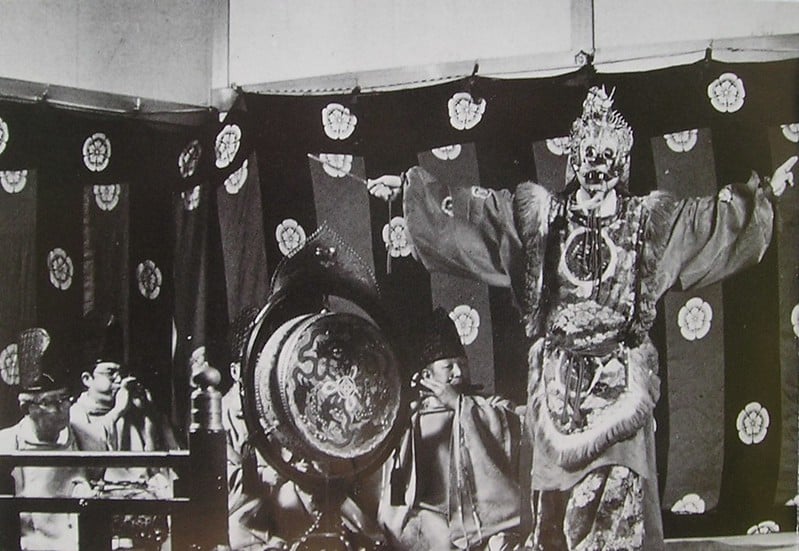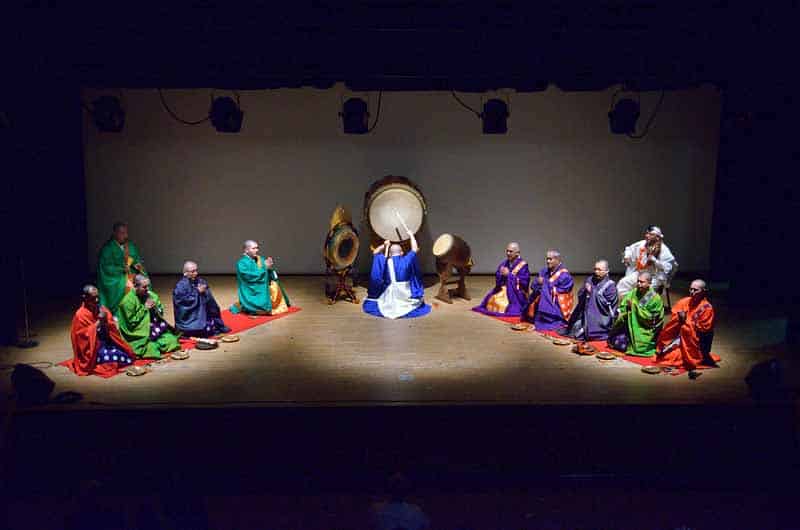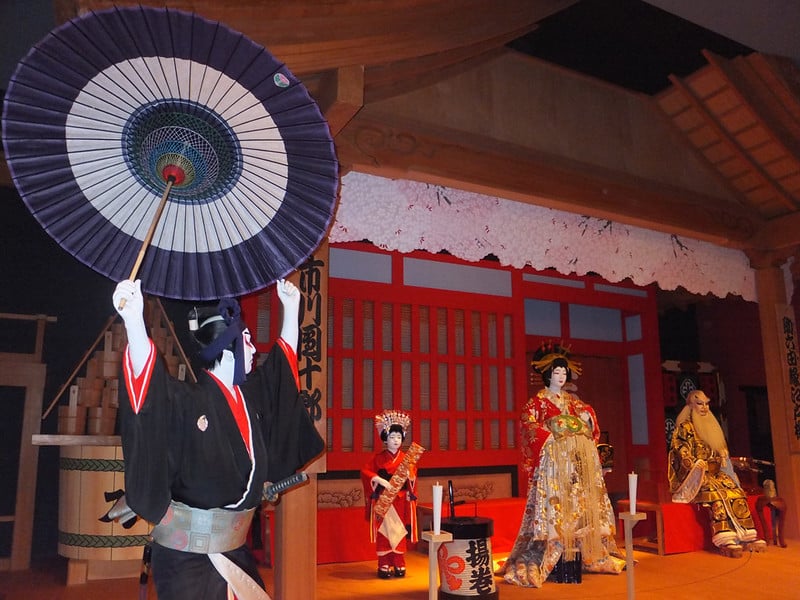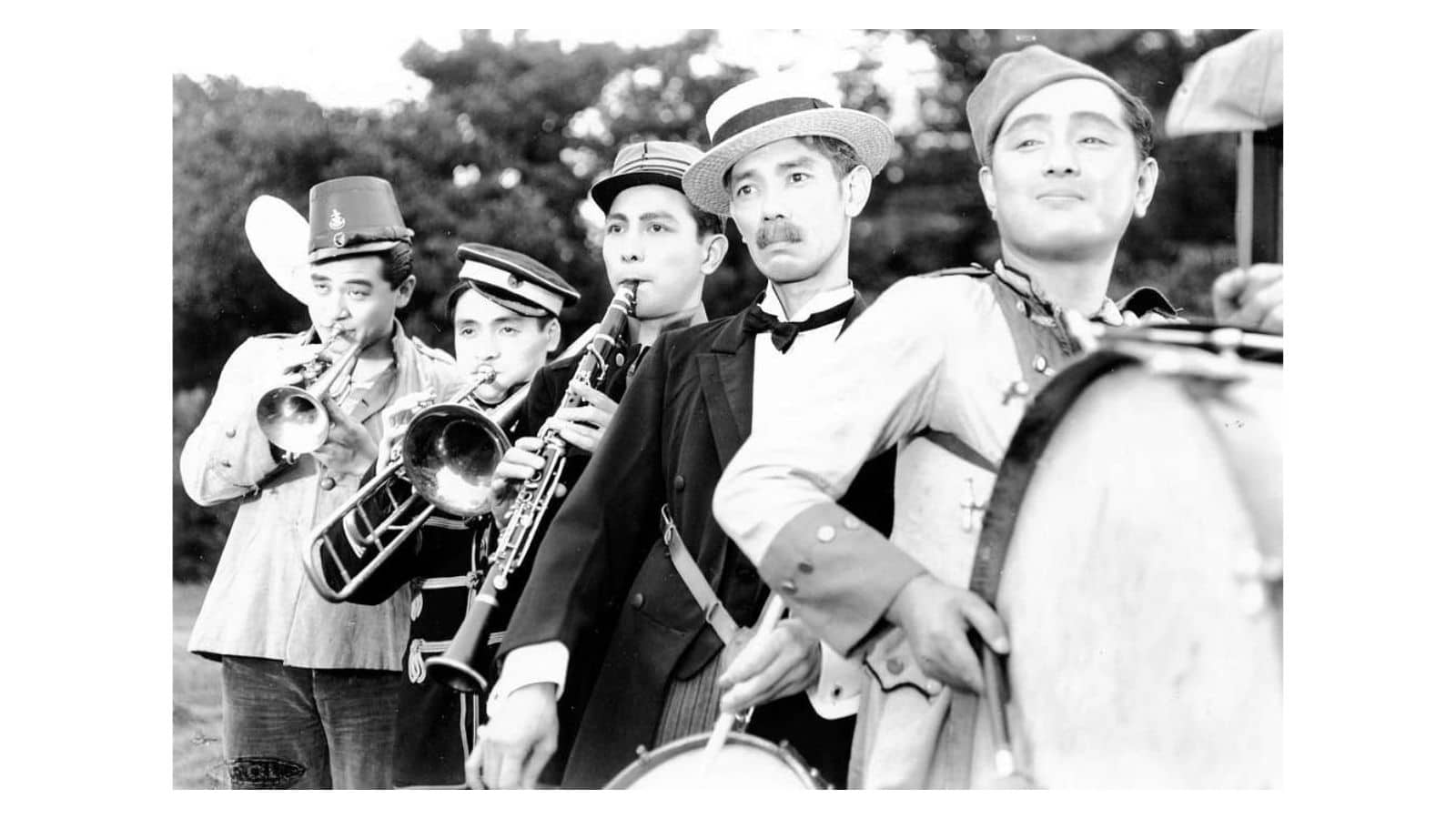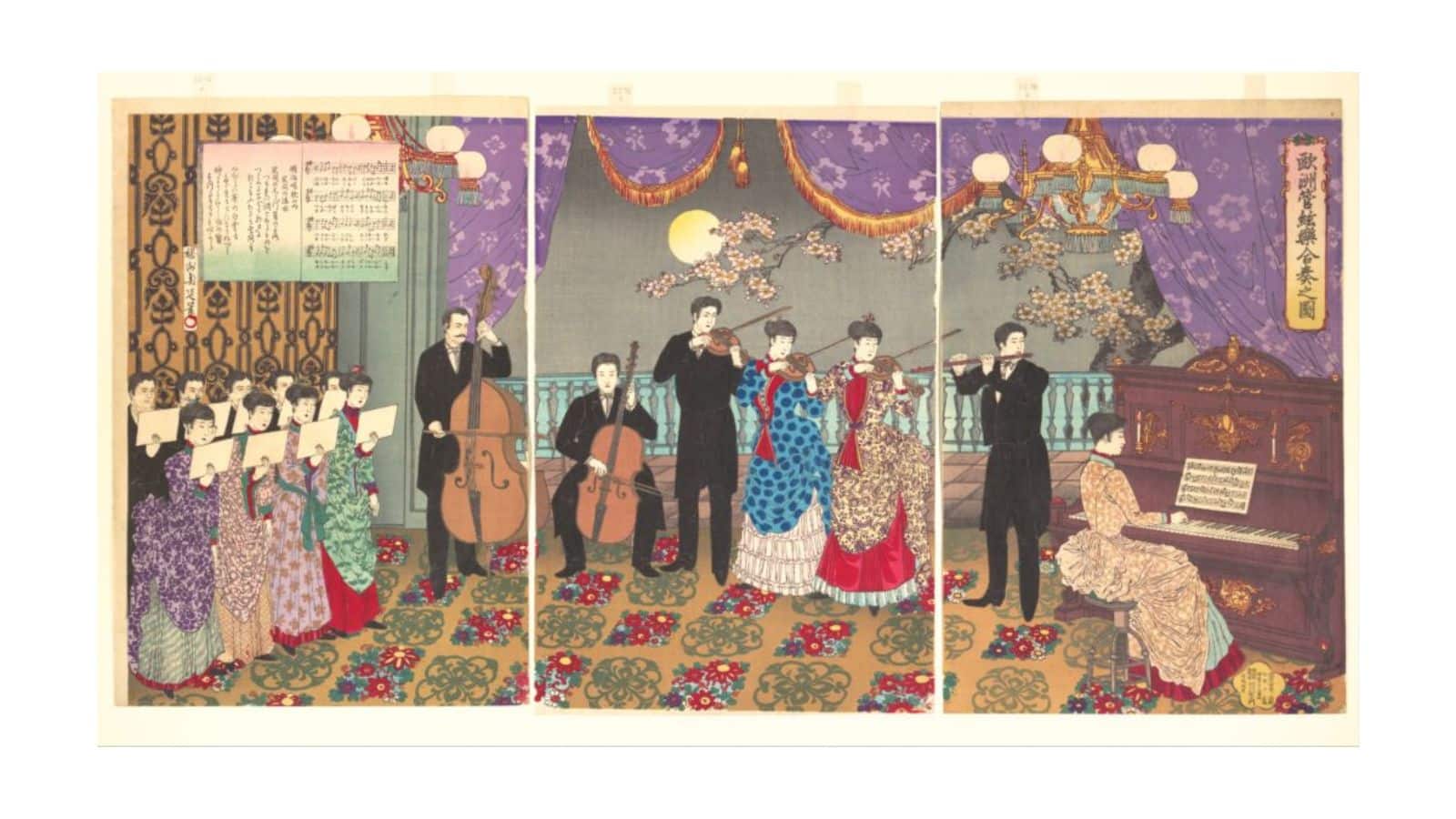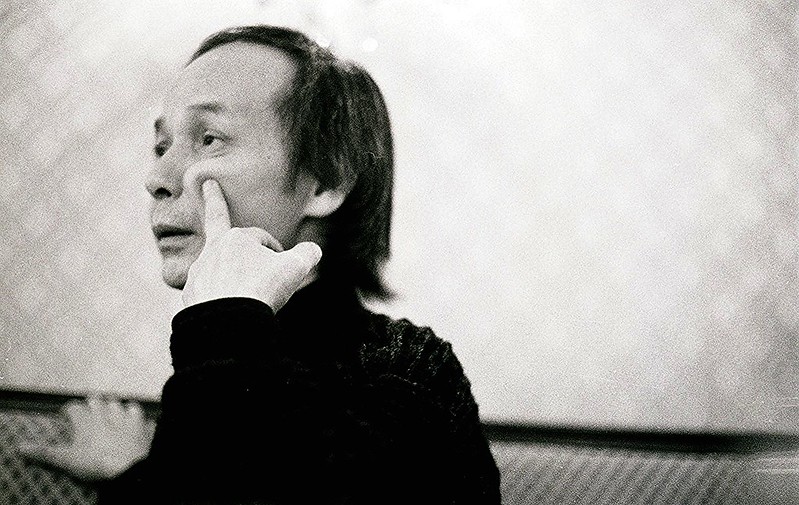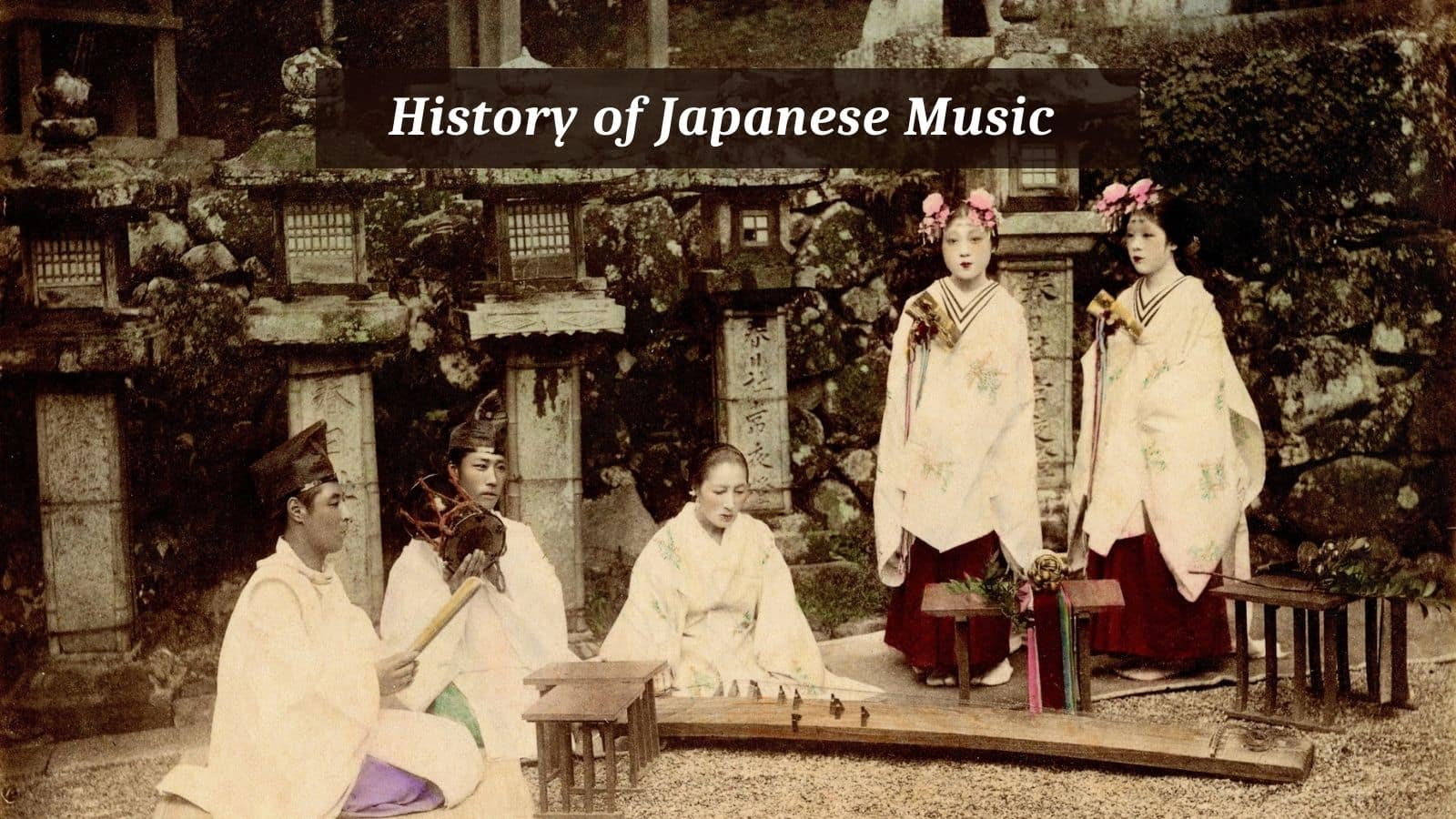
In parallel with so many cultures, the music of Japan is a complex and lengthy one. The evolution of Japanese music stretches back many thousands of years. Some of these ancient traditions and practices are still alive today. What is interesting to remember is that Japan is an island.
As such, it has largely avoided cultural exchanges with neighbouring countries like China and Korea, instead developing its very unique culture and traditions. There are overlaps, but Japan stands alone in its cultural heritage and musical customs.
History of Japanese Music
There is some evidence to suggest that the Neolithic people of Japan may have been the first musicians, but the first instruments discovered date from the Yoyoi period covers 300BC – 250BC. These were delightful bronze bells.
Forward in time, we discover barrel drums and very early versions of the zither. These have been seen in ancient pictures with four or five strings. Later, by the sixth century, additional strings were added possibly with influence from Korea.
As the centuries passed clans rose and fell. Mention is made of different religions that formed a core part of life in Japan. These include Shinto and eventually Buddhism. Early Shinto music made special use of the voice and apparently used quite complex polyphonic textures.
Music increasingly becomes mentioned or described in written form as Japan moves towards the 7th Century. It held an important place in ritual with the music travelling from generation to generation through strong oral traditions.
Two distinct styles of music begin to emerge throughout what is called the Heian period (794-1185). Shomyo and Gagaku are amongst the oldest types of Japanese music. Gagaku (elegant music), is considered to be Japanese classical music.
It was the kind of music that would have been held in the highest regard and performed at Palaces and Courts. It is thought that Gagaku was born at the Kyoto Imperial Palace during the Heian period. It remains an important part of Japanese culture today.
Gagaku incorporates dances and music and literally translated means elegant music. It is a Japanese, high theatre.
Gagaku according to many sources falls into three distinct kinds of styles. These are native Shinto music that is sacred; vocal music that stems from folk poetry and songs and dances that draw on foreign influence and tradition.
In the third category, you can pick up on Korean and Chinese inspiration. It is thought that the noun Gagaku was first used around 701 at the Imperial Academy of Music.
In contrast, Shomyo is an even more ancient music. This Japanese traditional music boasts a 1200-year history and is one of the oldest forms of Japanese music still performed today.
In a similar way to Gagaku, there is a dominance of the pentatonic scale which in this case comprises rising intervals of two, three, two, two and three half-steps or semitones. The music is a deeply sacred chant particular to the Buddhist monks of Japan.
A vital form of Japanese music that grew out of the musical and theatrical developments of the Kamakura period (1192-1333), is called Noh. It is a drama that includes dance.
The text for Noh heralds from old, traditional literature that usually includes aspects of the supernatural. This takes the form of a god-like being transforming into a human who then tells the story.
Noh is elaborate with costumes, masks and props. It requires considerable skill to perform as it requires skills of musicians, dancers and actors. The musical part of Noh is often chanted by a chorus.
The text is poetic and although a parallel is often made to Western opera, there is not much that is similar. The chorus sings only using a confined tonal range and the passages are repetitive. Instruments that accompany Noh include three drummers and a flautist. This ensemble is referred to as Hayashi-kata.
The melodic material used in Noh music reflected earlier times. Whilst the melodies usually contained ornamentation and specific forms they closely reflect the Buddhist chants from centuries before. Unusually, these songs were notated.
So much early music in the Western tradition was not written down but a unique form of notation was employed called utai. This is a notation that uses tear-shaped neumes that come with pitch names.
Noh dominated the Japanese musical landscape for many centuries. There were many variations on the original concepts as the years travelled on. Another form of dance-drama that probably emerged during the Edo period, is called Kabuki.
Kabuki is an extremely formalized yet enchanting performance. Flamboyant costumes are centre stage along with certain characters who wear kumadori make-up.
Even though Kabuki’s origins were inspired and developed by an all-female collective, this wonderful art form soon became the sole province of men. This remained true throughout the next three centuries.
A further form of music that became increasingly popular during the 17th Century was one called Bunraku. This is music that accompanies and enhances traditional Japanese puppetry.
The traditions of this type of theatre are thought to stem back as far as the 11th century. Accompanied by a samisen, or three-stringed Japanese lute, Bunraku uses dolls that are roughly half that of an adult.
The story is chanted and it is the musical relationship that develops between the chanter and the lutenist that governs the excellence of the performance.
As Japan entered the 19th century, there is increasing influence from the West. These came through the military, religion and schools. Amongst Japanese military leaders, Band Music became extremely popular.
To show the extent of its popularity the Emperor himself commanded that gagaku musicians be taught how to perform band music. The values embedded in Western music had impressed the Japanese Emperor leading to a genuine attempt at blending both musical traditions.
William Fenton (British Bandmaster) had several failed attempts at the task, but it was his successor, German-born Franz Eckert who was more successful.
Following the increased might of the Japanese military during this century, Western marches found a permanent place in the music of Japan. Slowly, the tradition of gagaku fused with the sounds of Western military music.
This influence spread into other forms of Japanese music such as popular songs and the music taught in schools.
Towards the end of the 19th-century attempts were made to create a music curriculum in Japanese public schools. These attempts did not bear fruit and the efforts to combine Japanese and Western music were largely a failure.
A teacher-training programme was started in Japan by American musician and educator, Luther Whiting Mason (1828-96), however, the results were not rewarding. Schools reverted towards the military for source material in opposition to the imposing morality that came with Mason’s songbook.
By 1890 the Tokyo School of Music was established where traditional instruments were taught alongside Western traditional music. Today the balance has been properly restored with full recognition of the importance of Japanese traditions and practices.
Western music continued to exert a powerful pull on Japanese music. Visiting musicians from the USA and the Philippines brought jazz to Japan in the early 1930s. This reinforced Japan’s adoration for American music and jazz gained a permanent place in the hearts of the Japanese.
The Hatano Jazz Band came out of the Tokyo Music School in the early 1910s. Jazz flourished previously to the outbreak of the Second World War when jazz was branded music of the enemy and banned.
One of the first jazz pioneers to surface after the was pianist Toshiko Akiyoshi who formed the Cozy Quartet and was trained at Berklee School of Music, USA.
Since the 1950s Jazz has not dimmed in popularity with many brilliant starts and groups coming to light in Japan. Tokyo remains the hub for many jazz artists.
Many fine composers have come from Japan since the turn of the 20th century. One of my personal favourites is Toru Takemitsu (1930-1996). What is remarkable about Takemitsu is that he is self-taught.
He was not only a composer of what was then considered to be avant-garde music, but also an author of several important texts on aesthetics and the theory of music.
Takemitsu’s catalogue numbers hundreds of pieces many of which demonstrate the characteristics of the French impressionist composers such as Ravel and Debussy. His music is not derivative or pastiche; it’s far more.
Alongside his glittering orchestrations, Takemitsu successfully achieved the perfect mélange of traditional Japanese music and the Western Classical tradition.
Popular music culture flourishes in Japan today alongside the world of traditional music making. The Japanese have absorbed huge swathes of Western popular music styles and turned them into their own, often vibrantly diverse musical forms.
Amongst the numerous forms of pop are Idol pop, Dance and Disco, Rock, Punk and Metal (even extreme metal), Hip Hop and one of the most successful; game music. One of the most outstanding composers of game music is Nobuo Uematsu, known best for his work on the Final Fantasy game series.

